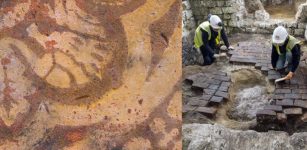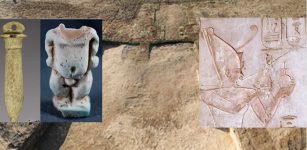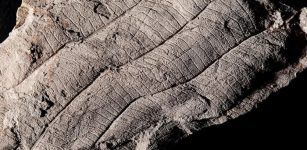Secrets Of Ancient Ivory Manikins Revealed
Conny Waters – AncientPages.com - There is little information about these ancient ivory manikins that have been a bit of medical mystery until now. Ancient ivory manikins are small anatomical sculptures thought to be used by doctors.
Made in the image of a human, usually a female, these captivating ivory dolls were most likely carved in Germany in the late 17th century. Being only 4-8 inches long, the ivory dolls have intricately carved features, and some even have pillows beneath their heads.
This is an ivory figurine reclining on its 'bed' with all organs placed inside. Credit: Study author and RSNA
It is believed that they were used for the study of medical anatomy or perhaps as a teaching aid for pregnancy and childbirth.
By the 18th century, they had been replaced by more realistic teaching tools, such as wax models and cadavers. The manikins then became objects of curiosity and luxury status symbols in private collections.
Duke University in Durham, N.C., holds the world's largest collection of manikins (22 out of 180 known manikins worldwide). Most of the manikins in the Duke collection were purchased in the 1930s and 1940s by Duke thoracic surgeon Josiah Trent, M.D., and his wife Mary Duke Biddle Trent, prior to the 1989 ivory trade ban.
See also:
3,000-Year-Old African Musical Instrument Can Help Modern Medicine
Clay Tablets Reveal Sumerian Doctors Treated Disease With Spells Of Magic And Medicine
Knowledge Of Ancient Medicine Hidden In Undeciphered Egyptian Manuscripts
The researchers noted that after being donated to the university by Trent's granddaughters, the manikins have spent most of their time in archival storage boxes or behind display glass, as they are too fragile for regular handling.
"They are usually stored in a library vault and occasionally rotated into a special display unit in the Duke Medical Library for visitors to appreciate," said Fides R. Schwartz, M.D., research fellow in the Department of Radiology at Duke.
This is an ivory manikin after removal of the abdominal and chest wall, ribs, and part of the uterus. Internal organs such as the lungs, intestines, as well as a fetus inside the uterus are visible. Credit: Study author and RSNA
Using non-destructive imaging with X-rays and CT, researchers can now reveal the secrets of these ancient ivory manikins. A research team from the Radiological Society of North America scanned 22 ivory manikins and report 20 of the dolls were composed of true ivory alone, though materials like antler might have been less expensive in that time. They discovered that one manikin was made entirely of antler bone, and one manikin contained both ivory and whale bone components.
Metallic components were found in four of the manikins, and fibers in two. Twelve manikins contained hinging mechanisms or internal repairs with ivory pins, and one manikin contained a long detachable pin disguised as a hairpiece.
The most established trade routes in the 17th and 18th centuries sourced ivory from Africa, leading the researchers to believe that since nearly all of the manikins were made from true ivory, it is likely that the ivory obtained to craft the manikins was acquired from the African region.
"This may assist in further narrowing down the most probable production period for the manikins," Dr. Schwartz said.
"Once historical trade routes are more thoroughly understood, it might become clear that the German region of origin had access to elephant ivory only for a limited time during the 17th and 18th century, for example, from 1650 to 1700 A.D."
“This is potentially valuable to scientific, historic and artistic communities, as it would allow display and further study of these objects while protecting the fragile originals,” Dr. Schwartz said. “Digitizing and 3D printing them will give visitors more access and opportunity to interact with the manikins and may also allow investigators to learn more about their history.”
Incredible Anatomical Human Machines – Two Fleshless Bodies Mystery - Read more
Knowledge of human anatomy was quite advanced in the past. This is demonstrated by the so-called ‘Anatomical Machines’ preserved in the underground crypt of the Sanseveri Chapel, located in the historic center of Naples, Italy.
The ‘Anatomical Machines’ are the skeletons of a man and of a woman in an upright position with the artery and vein systems almost perfectly intact.
Still today, after about two-and-a-half centuries, it remains a mystery what procedures and/or materials were used to obtain such exceptional preservation of the circulatory system.
Written by Conny Waters - AncientPages.com Staff Writer























